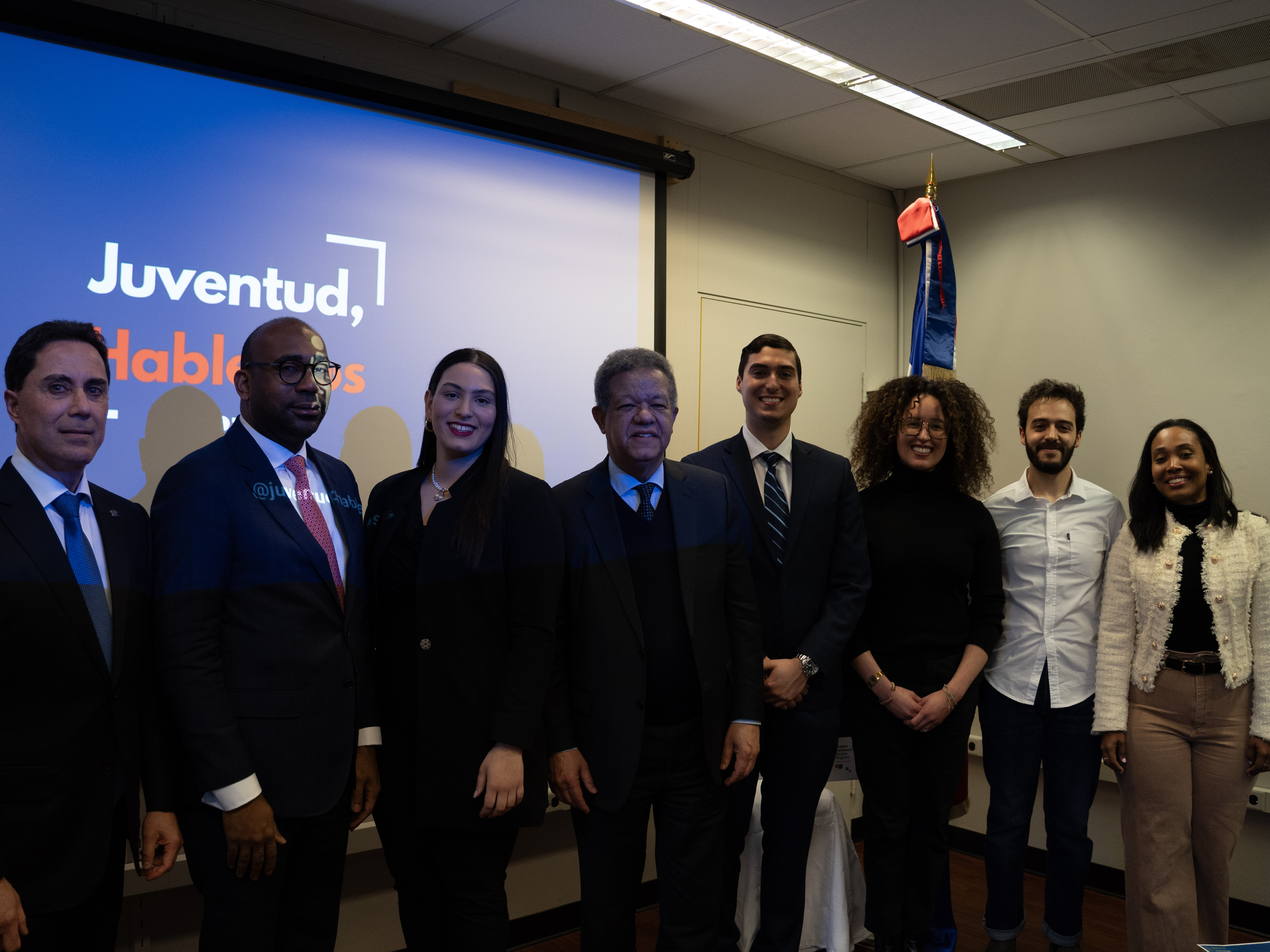Medio Ambiente auspicia conferencia sobre ciudades sostenibles
 | Medio Ambiente auspicia conferencia sobre ciudades sostenibles El proceso de convertir una ciudad caótica en sostenible no requiere de jornadas agotadoras y burocráticas, ni de grandes inversiones, sino de intervenciones rápidas en puntos críticos de la ciudad para adaptarla a la modernidad, a juicio del arquitecto brasileño Jaime Lerner, experto en urbanismo. El arquitecto dijo que si se toma en cuenta que el 75 por ciento de las emisiones de carbono se origina en las ciudades, las iniciativas de cada ciudadano cuentan, como sería reciclar la basura, vivir cerca del trabajo y usar menos el vehículo. Lerner consideró que todas las ciudades deben tener un diseño que ordene su crecimiento e indique sus prioridades, y que esas intervenciones puntuales, a las que llama acupuntura urbana, deben responder a ese proceso de planeamiento. Sus consideraciones formaron parte de la conferencia magistral “Arquitectura y Medio Ambiente: Ciudades Sostenibles”, auspiciada por la Secretaría de Estado de Medio Ambiente y Recursos Naturales y la Fundación Erwin Walter Palm. El arquitecto dijo que si se toma en cuenta que el 75 por ciento de las emisiones de carbono se origina en las ciudades, las iniciativas de cada ciudadano cuentan, como sería reciclar la basura, vivir cerca del trabajo y usar menos el vehículo. Consideró que la sostenibilidad es una ecuación entre lo que se ahorra y lo que se gasta. “De lo que se trata es de ahorrar cada vez más y reaprovechar al máximo”, afirmó. Precisó que la sostenibilidad de las ciudades también tiene relación con sus áreas verdes. En el caso del reciclaje de la basura dijo que su natal Curitiba, en donde el 70 por ciento de la población separa los desperdicios sólidos en sus casas, tiene el más alto índice de aprovechamiento de la basura. Con respecto a las áreas verdes, informó que en 1971 esa ciudad disponía de medio metro de área verde por habitante y que en la actualidad, con una población triplicada, cuenta con 52 metros cuadrados por habitante. El también experto en medio ambiente agregó que una ciudad sostenible necesita un sistema de transporte masivo poco contaminante, como el metro y los autobuses articulados con corredores exclusivos e independientes. Con relación al aprovechamiento de los espacios consideró que estructuras como los multiusos deben utilizarse de manera intensiva y que los centros de las ciudades deben ser accesibles y atractivos para toda la familia. A esos fines, dijo que hay que dotarlos de espacios urbanos como parques y peatonizar algunas calles, lo que permitiría que la gente se conozca y se salude. También, que esos espacios deben impregnarse de un nuevo dinamismo sobre todo por las noches, con la realización de ferias y mercados. Biografía del arquitecto Jaime Lerner Lerner nació en Brasil, en el seno de una familia de inmigrantes polacos. Se graduó en 1964 en la Escuela de Arquitectura de la Universidad Federal de Paraná. Al año siguiente contribuyó a la creación del Instituto de Investigación y Planificación Urbana de Curitiba (IPPUC – Instituto de pesquisa e planejamento urbano de Curitiba), del cual fue presidente en 1968 y 1969. Además es experto en cuestiones ambientales. Fue electo en tres ocasiones como alcalde de Curitiba (1971-1975, 1979-1983, y 1989-1992). También fue electo gobernador del Estado de Paraná en dos ocasiones (1995-1998, y 1999-2002). En 1975 Lerner fue Consultor de Asuntos Urbanos de la Organización de las Naciones Unidas. La ONU le otorgó el Premio Máximo de Medio Ambiente en 1990. La UNICEF lo condecoró en 1996 por sus programas «Da Rua para a Escola» (De la Calle a la escuela), «Protegendo a Vida» (Protegiendo la vida), y «Universidade do Professor» (Universidad del profesor). En 2001 Lerner recibió el World Technology Award for Transportation (Premio mundial de tecnología para el transporte); y en 2002 el Premio Sir Robert Mathew por mejorar la calidad de los asentamientos humanos, por parte de la Unión Internacional de Arquitectos. También recibió, en 2004, el premio ambiental Volvo. Además fue el padrino del Instituto de Planificación Urbana de Córdoba (Argentina), el IPPUCOR. En 2002 fue electo presidente de la Unión Internacional de Arquitectos, para un período que terminó en 2005. Impacto de Lerner en la planeación urbana Durante las últimas tres décadas, y en parte gracias a la administración de Lerner, ha habido en Curitiba un impacto urbano de dimensiones tales que la ciudad se ha situado en el primer plano de referencia en cuanto a planificación urbana, transportes, cuidado del medio ambiente y programas sociales. En su primera gestión como alcalde, implantó el Sistema Integrado de Transporte Colectivo, que sirvió de modelo para muchos otros sistemas en otros países, como por ejemplo el Transmilenio. El sistema se denomina actualmente RIT (Red integrada de Transporte). Con relación al aprovechamiento de los espacios consideró que estructuras como los multiusos deben utilizarse de manera intensiva y que los centros de las ciudades deben ser accesibles y atractivos para toda la familia. Además de Curitiba, Lerner ha participado en la elaboración de planes de desarrollo urbano para las ciudades de Rio de Janeiro, Sao Paulo, Recife, Salvador, Niterói, Natal, Aracaju, Goiânia y Campo Grande. Asimismo, ha ofrecido sus servicios de asesoría a Shanghái, San Juan, Caracas, La Habana, Seúl y Santiago de los Caballeros (República Dominicana). Obras publicadas
Principales premios
Principales títulos
| |
| Fecha de Actualización: 16 de Agosto del 2009 |

Noticias relacionadas
-

MINC realiza el evento "Enamórate del Arte y la Cultura" en Los Alcarrizos
-

InspireDR celebra una década de impacto con “La Fiesta 10” en Cabarete
-

Organización “Juventud Hablemos” de la Universidad de Columbia y la GFDD copatrocinan a casa llena evento sobre “La evolución de la democracia en la República Dominicana”
-

Realizan premiere del documental “El Padrino II: 50 años y su filmación en República Dominicana”
-

Festival de Cine Global de Santo Domingo (FCGSD) - Del 31 de enero al 6 de febrero del 2025
El Festival de Cine Global de Santo Domingo arriba a su decimoséptima edición con muchos logros y protagonistas. Los artistas internacionales y los dominicanos que han dejado su estela durante su paso por Santo Domingo y las demás ciudades que han sido sedes del Festival, son la mejor evidencia de la calidad que ha logrado el encuentro cinematográfico organizado por la Fundación Global Democracia y Desarrollo (FUNGLODE).



